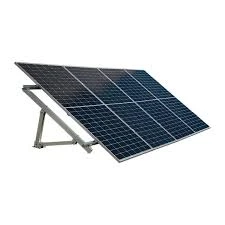poly solar panel price
Understanding Poly Solar Panel Prices A Comprehensive Overview
As the world increasingly shifts towards renewable energy sources, solar power has gained significant traction as a sustainable and eco-friendly solution. Among the various solar technologies available, polycrystalline (or poly) solar panels have emerged as a popular choice for both residential and commercial applications. One major consideration for potential buyers is the price of poly solar panels. In this article, we will explore the factors influencing the price of poly solar panels and their advantages, making it easier for consumers to make informed decisions.
What Are Poly Solar Panels?
Polycrystalline solar panels are made from multiple crystals of silicon, which are melted together to form a solid block before being sliced into wafers. This process makes them simpler and less expensive to manufacture compared to monocrystalline panels, which are made from a single crystal structure. As such, poly solar panels typically have lower efficiencies and a slightly larger physical footprint, but they also tend to come at a more affordable price point.
Current Market Prices
The price of poly solar panels can vary significantly based on several factors. As of late 2023, the average cost of poly solar panels ranges from $0.50 to $0.80 per watt, depending on the manufacturer, the technology used, and the location of purchase. For a residential system that requires about 5kW of solar power, this translates to an investment of approximately $2,500 to $4,000 for the panels alone. While this might seem substantial upfront, it’s essential to consider the long-term savings on electricity bills and the various incentives available to reduce overall costs.
Factors Influencing Prices
poly solar panel price

1. Manufacturing Costs The production process of poly panels is generally less expensive than that of other types, but operational costs, material availability, and the scale of production can impact pricing. Global supply chain issues or changes in raw material costs can lead to fluctuations in the market price.
2. Efficiency Ratings While poly solar panels are cheaper, they also tend to have a lower efficiency rating—typically between 15-20%. Buyers may opt for higher-efficiency models, which can push prices higher.
3. Brand Reputation Well-established brands often charge a premium due to their reliability and warranty offerings. However, lesser-known manufacturers might provide more competitive pricing without sacrificing essential quality.
4. Installation Costs The price of poly solar panels is only one part of the total expenditure. Installation costs can vary widely based on the complexity of the installation, geographical factors, and local regulations. It’s crucial to obtain quotes from multiple installers to find the best overall deal.
5. Incentives and Rebates Many governments provide tax credits, rebates, and financing options to encourage the adoption of solar energy. These incentives can significantly lower the effective price of poly solar panels, making them a more attractive option for consumers.
Conclusion
In summary, poly solar panels represent a cost-effective solution for solar energy adoption. While their prices can vary based on various factors, the overall trend points to a growing affordability of solar technology. For homeowners and businesses alike, investing in poly solar panels means not only contributing to a greener planet but also enjoying long-term savings and energy independence. As technology continues to advance, the future of solar energy is indeed bright, with poly solar panels playing a key role in this transition.
-
String Solar Inverter: The High-Efficiency Solution for Smart Solar EnergyNewsJul.14,2025
-
Revolutionizing Rooftop Energy with the Power of the Micro Solar InverterNewsJul.14,2025
-
Power Independence with Smart Off Grid Solar Inverter SolutionsNewsJul.14,2025
-
On Grid Solar Inverter: Powering the Future with Smart Grid IntegrationNewsJul.14,2025
-
Monocrystalline Solar Panels: High-Efficiency Power for the Future of Clean EnergyNewsJul.14,2025
-
Bifacial Solar Panel: A Smarter Investment for Next-Generation Energy SystemsNewsJul.14,2025







